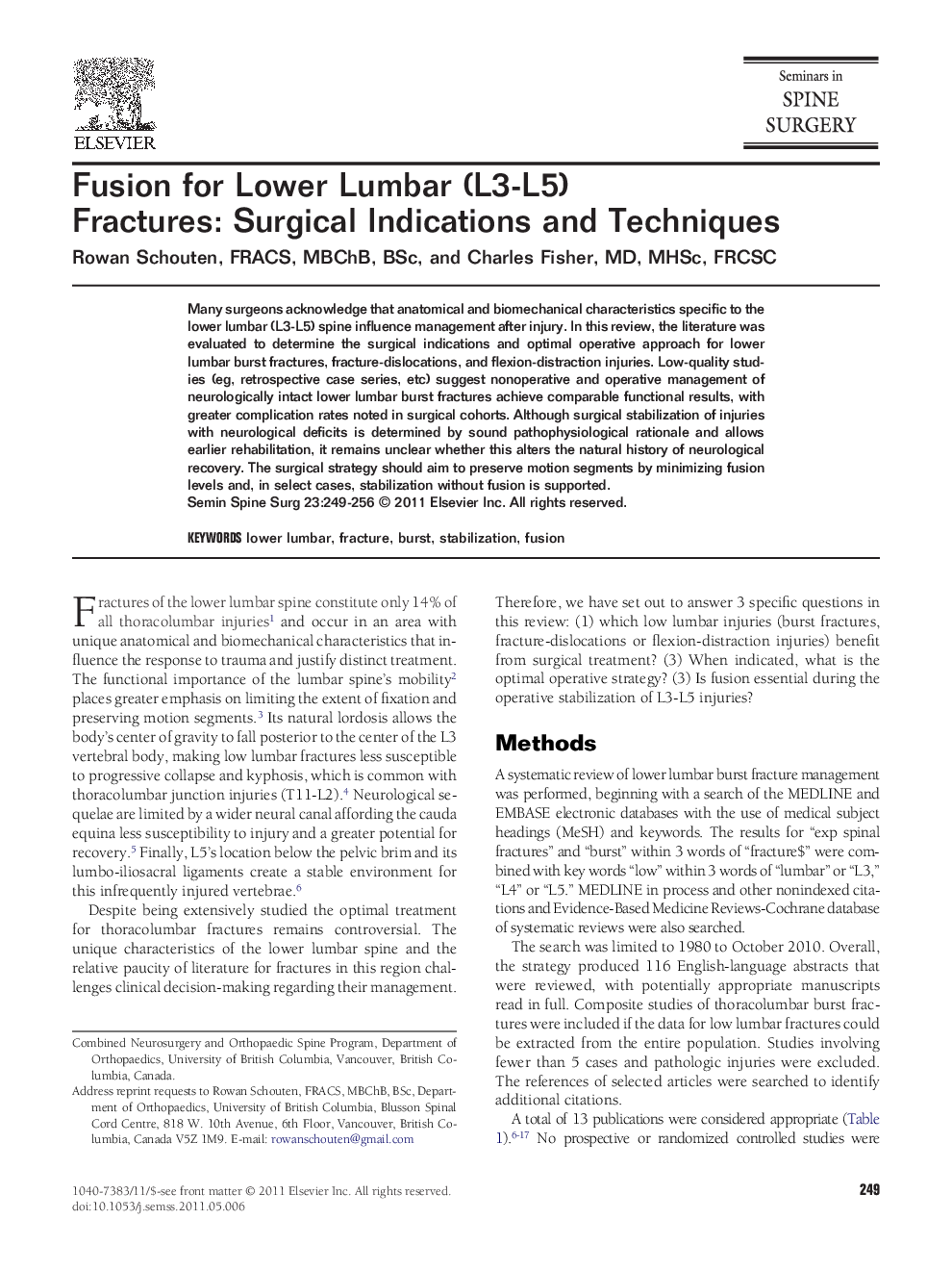| Article ID | Journal | Published Year | Pages | File Type |
|---|---|---|---|---|
| 4094598 | Seminars in Spine Surgery | 2011 | 8 Pages |
Many surgeons acknowledge that anatomical and biomechanical characteristics specific to the lower lumbar (L3-L5) spine influence management after injury. In this review, the literature was evaluated to determine the surgical indications and optimal operative approach for lower lumbar burst fractures, fracture-dislocations, and flexion-distraction injuries. Low-quality studies (eg, retrospective case series, etc) suggest nonoperative and operative management of neurologically intact lower lumbar burst fractures achieve comparable functional results, with greater complication rates noted in surgical cohorts. Although surgical stabilization of injuries with neurological deficits is determined by sound pathophysiological rationale and allows earlier rehabilitation, it remains unclear whether this alters the natural history of neurological recovery. The surgical strategy should aim to preserve motion segments by minimizing fusion levels and, in select cases, stabilization without fusion is supported.
